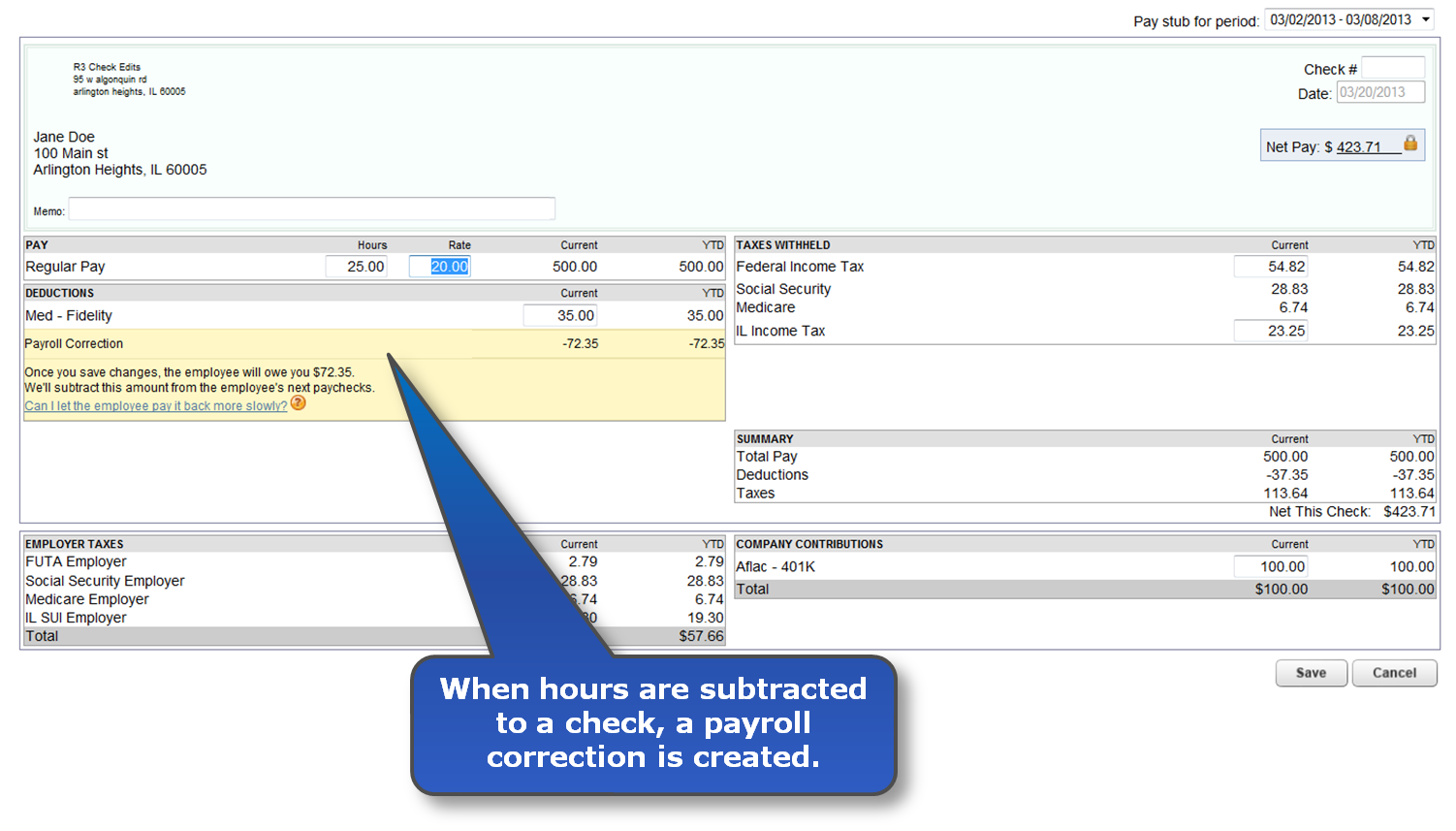

- Deleting a check in quickbooks payroll service software#
- Deleting a check in quickbooks payroll service code#
This means you can have the earnings of one job go to one account and the earnings of a second job go to a different account. This will expand the entry we send over into the accounting software.īefore you map your chart of accounts by jobs, make sure each employee and contractor is assigned to at least one job. Mapping by job codes (as opposed to departments) is good for businesses with multiple people in the same role, and when some employees split their time between two roles.
Deleting a check in quickbooks payroll service code#
Job code mapping is another way to add additional granularity. Refresh your page and it will be available in Gusto. If you don’t see an account you’d like to use, hop into your QuickBooks Online chart of accounts and create an account.
Deleting a check in quickbooks payroll service software#
More detail in the entry results in more detailed reports in your accounting software (profit and loss report, expense reports, outstanding liability reports etc.). The more accounts you choose when setting up your integration, the more detail there will be in the line entries on your Journal Entry. Once all payroll items are matched with the corresponding accounts, the building blocks are in place for the Journal Entry that Gusto will sync over into your accounting software. In order to properly sync over the payroll details through our integration, each of these payroll items will need to be linked to an account that is pulled directly from the Chart of Accounts in QuickBooks Online. Earnings Types (Regular, Bonus, Commission etc.).What’s your opinion on this? Why do you think QuickBooks made deleting multiple transactions tricky? Share your thoughts with the rest of the TJ community in the comments section below.When setting up your mappings you will be prompted to add: Primarily because of security or certain regulations that shape the service. Make Your Books Pristine CleanĪt present, bulk-deleting QuickBooks transactions is probably more work than you’d bargained for. These are located next to the Transaction Type drop-down menu. To hide or show either one, just click on the box in front of the corresponding option. Plus, QuickBooks gives you the option to hide or show voided or linked transactions.

There you can select “Last modified date”, “Enter date”, and “Transaction date”. Within the Available Transaction, go to “Show Transactions By” and click on the drop-down menu next to it. Go to the Transaction Type option, click on the drop-down menu next to it, then click on the specific transaction type.Īside from this, you can filter transactions by date. And the best thing is that you then get to void or delete them as per the filter. If you run all your transactions through QuickBooks, filtering options may significantly speed up removing the surplus ones.įirst, QuickBooks allows you to apply filters based on transaction type. There’s a confirmation pop-up and you hit OK to confirm. Once at the transaction you’d like to ditch, select Edit from the main menu and click Delete. Note that the transactions appear in the order of your choosing, and you can change that. Browse all the transactions and find the one you’d like to remove. Go to the account that contains the transactions you’d like to delete and hit Open. Then, click “Chart of Accounts” – it appears under the drop-down menu. Open QuickBooks, navigate to the main menu, and select Lists. Then again, it applies to QuickBooks Desktop and you need to sign in with administrative privileges.


 0 kommentar(er)
0 kommentar(er)
